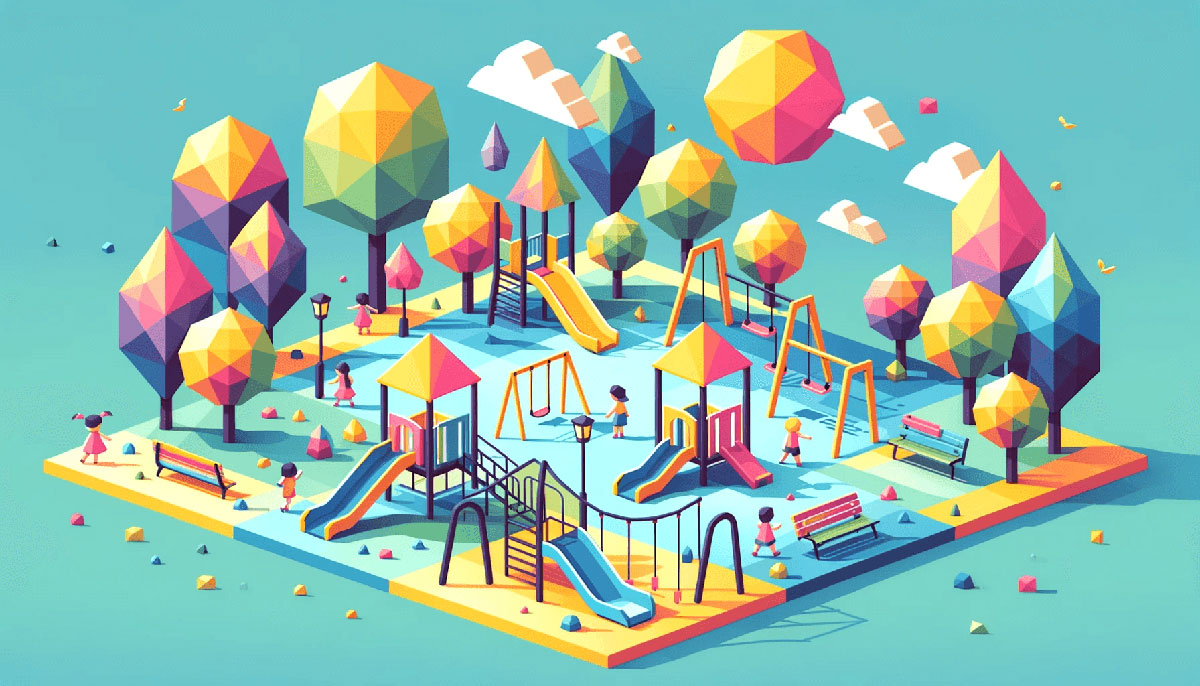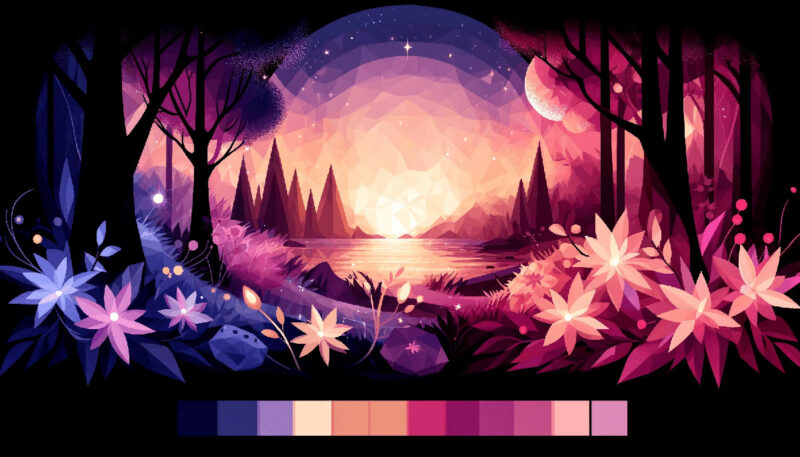Playtime Perfection: Fun Kids Color Palettes

Sprinkles of imagination, dashes of vibrancy—kids color palettes transform ordinary spaces into realms of adventure and discovery.
Colors wield the power to spark creativity and influence mood, particularly in children, whose worlds are painted with the fresh strokes of exploration.
In the delicate craft of web design, the selection of hues for a child-centric website requires an acute understanding of this dynamic relationship between color and development.
Dive into the canvas of this article, where hues are not just seen but felt. Here, one learns how a thoughtfully curated palette can become a catalyst for learning and joy.
The psychology behind nursery colors and the psychological effects of colors on kids nestle alongside the practicality of non-toxic paints and interactive wall colors.
Expect a colorful journey through the significance of Montessori Color Palettes, the excitement of Playroom Color Ideas, and the harmony of Gender-Neutral Colors starkly outlined.
Move past mere aesthetics; we paint pictures that shape young minds. This article is less about dictating choices, more about guiding visions—the blueprint awaits.
Examples of Kids Color Palettes
| #BC7FCD | #FB9AD1 | #FFEBB2 | #FFCDEA |
| #C6EBC5 | #7EA1FF | #5BBCFF | #FF5BAE |
| #FFF455 | #4793AF | #FFD1E3 | #86469C |
| #FFFDD7 | #FFE4CF | #FFC700 | #007F73 |
| #E72929 | #F7EEDD | #ACE2E1 | #41C9E2 |
| #8B322C | #DD5746 | #FFC470 | #008DDA |
| #A1C398 | #912BBC | #FFEFEF | #FA7070 |
| #F3D0D7 | #F0EBE3 | #F6F5F2 | #4CCD99 |
| #C4E4FF | #D895DA | #D6589F | #D20062 |
| #E9A89B | #D875C7 | #FFFAB7 | #FEFDED |
| #F1EF99 | #A4CE95 | #F6F5F5 | #FF3EA5 |
| #9BB0C1 | #EADFB4 | #FAA300 | #5F5D9C |
| #898121 | #EE4266 | #59D5E0 | #E5C287 |
| #FDAB34 | #FFB5DA | #337357 | #0C359E |
| #FF7ED4 | #F4538A | #F5DD61 | #D37676 |
| #F6995C | #51829B | #B0C5A4 | #E8751A |
| #F2C18D | #EBC49F | #A5DD9B | #6420AA |
| #6196A6 | #C5EBAA | #50C4ED | #387ADF |
| #FDA403 | #FFF193 | #FFE3CA | #F4EDCC |
| #EE99C2 | #333A73 | #FFD23F | #5E1675 |
| #F28585 | #FFA447 | #637A9F | #F9F07A |
| #F0F3FF | #211C6A | #EFF396 | #FDBF60 |
| #7F27FF | #FB88B4 | #FFF67E | #FFCF96 |
| #59B4C3 | #40A2E3 | #BFEA7C | #B7C9F2 |
| #BBE2EC | #9195F6 | #9BCF53 | #E8C872 |
| #211951 | #74E291 | #B7E5B4 | #CDFADB |
| #FF8080 | #FFF7F1 | #15F5BA | #836FFF |
| #F6FDC3 | #0D9276 | #BED1CF | #416D19 |
| #FFF6E9 | #9F70FD | #C9D7DD | #FF8911 |
| #FFE4C9 | #E78895 | #FFFC9B | #FFEC3F |
| #280274 | #3652AD | #FE7A36 | #E9F6FF |
| #6895D2 | #FDE767 | #F3B95F | #D04848 |
| #3468C0 | #86A7FC | #FFDD95 | #FF9843 |
| #FFEAA7 | #FFBB64 | #FF6868 | #DCFFB7 |
| #F2F597 | #37B5B6 | #492E87 | #0A1D56 |
| #F9F7C9 | #D5F0C1 | #AAD9BB | #80BCBD |
| #DC84F3 | #E9A8F2 | #F3CCF3 | #FFE7C1 |
| #402B3A | #D63484 | #FF9BD2 | #F8F4EC |
| #FFE5E5 | #E0AED0 | #AC87C5 | #756AB6 |
| #F6D6D6 | #F6F7C4 | #A1EEBD | #7BD3EA |
FAQ on Kids Color Palettes
How do colors affect a child’s development?
Colors are not just decorative; they are developmental catalysts. Child development and color perception intertwine; vibrant hues can energize, pastels can soothe.
Through the strategic use of color, one can foster environments that promote cognitive growth and emotional well-being.
Can certain colors improve learning for children?
Indeed, a careful orchestration of a learning environment’s color palette can enhance focus and retention.
Research suggests bright color combinations stimulate the mind, while blues and greens maintain calm, creating a balanced atmosphere for absorbing new information.
What are some gender-neutral colors for a child’s space?
The winds of change have steered us toward an inclusive palette. Gender-neutral colors like teals, yellows, and soft greens are gaining favor.
These choices promote equality and give a fresh, modern feel to children’s environments without boxing in their potential based on antiquated color norms.
Are there any colors that should be avoided in kids’ rooms?
While there’s no universal blacklist, it’s generally prudent to use highly saturated, bold colors like red or neon colors in moderation.
They could over-stimulate or agitate, particularly for sleep areas. Balance and harmony are pivotal; mixing brights with grounding neutrals is an evergreen strategy.
What are the best color schemes for a playroom?
A playroom color idea should evoke energy and creativity. A chorus of primary colors with accents of secondary hues fosters a lively environment.
Integrating interactive wall colors can also introduce an element of play and learning; think chalkboard paint or magnetic areas for imaginative exploration.
How does color psychology apply to children’s rooms?
Color psychology delves deep into the emotional and behavioral impacts of colors. For instance, green is often linked to growth and tranquility, making it a prime choice for spaces where calm is needed.
The psychological effects of colors must be a considered part of your palette selection.
What are the current trends for nursery color palettes?
Present-day nurseries are basking in a mix of calming pastel colors and earthy tones. The trend leans towards using eco-friendly paints to carve out serene nurseries that double as safe havens—free from toxins, rich in aesthetic softness.
How can I use color to create a stimulating yet relaxing kids’ bedroom?
Harmony is key. Combine actively stimulating colors, such as oranges or bright blues, with relaxing shades like lavenders or light grays.
It’s about curating a vibrant yet soothing color mix, a symphonic blend that invites both excitement and tranquility into a child’s personal haven.
Are there colors that can help kids with special needs?
Absolutely, hues like soft pinks or muted blues can be particularly comforting for children on the autism spectrum.
The use of sensory room color ideas tailored to a child’s specific needs can create a safe and supportive space, encouraging self-regulation and reducing sensory overload.
What should I consider when choosing a color palette for children with visual impairments?
Contrast and brightness are critical factors. High contrast palettes help define spaces and objects, aiding in spatial awareness.
Colorful play area designs that use a vivid spectrum can enhance the way children with low vision engage with their environment, making it more navigable and enjoyable.
Conclusion
Embarking on the voyage of selecting the perfect kids color palettes isn’t just about aesthetics. It’s about stitching a spectrum of possibilities into the fabric of young imaginations. Within the whirlwind of bright color combinations and pastel tones, there lies a path to enliven spaces where children learn, play, and grow.
- Reflect on playroom color ideas
- Muse over gender-neutral shades
- Consider the impact of color psychology
These are the pillars upon which vibrant, youthful environments are crafted. Hues, after all, are the silent narrators of a child’s story, the backdrop to their daily discoveries.
Navigating through the landscape of nursery colors and educational color themes, one learns that the right palette is more than a visual choice—it’s an investment in childhood joy and curiosity. As this journey through chromatic choices concludes, may the tapestry of your new knowledge inspire spaces that are as limitless as a child’s potential. Bright beginnings await.
- Luxury Fonts: What Font Does Dior Use? - 17 May 2024
- The Dos Equis Logo History, Colors, Font, And Meaning - 16 May 2024
- Purple Color Palettes Fit for Royalty - 16 May 2024









